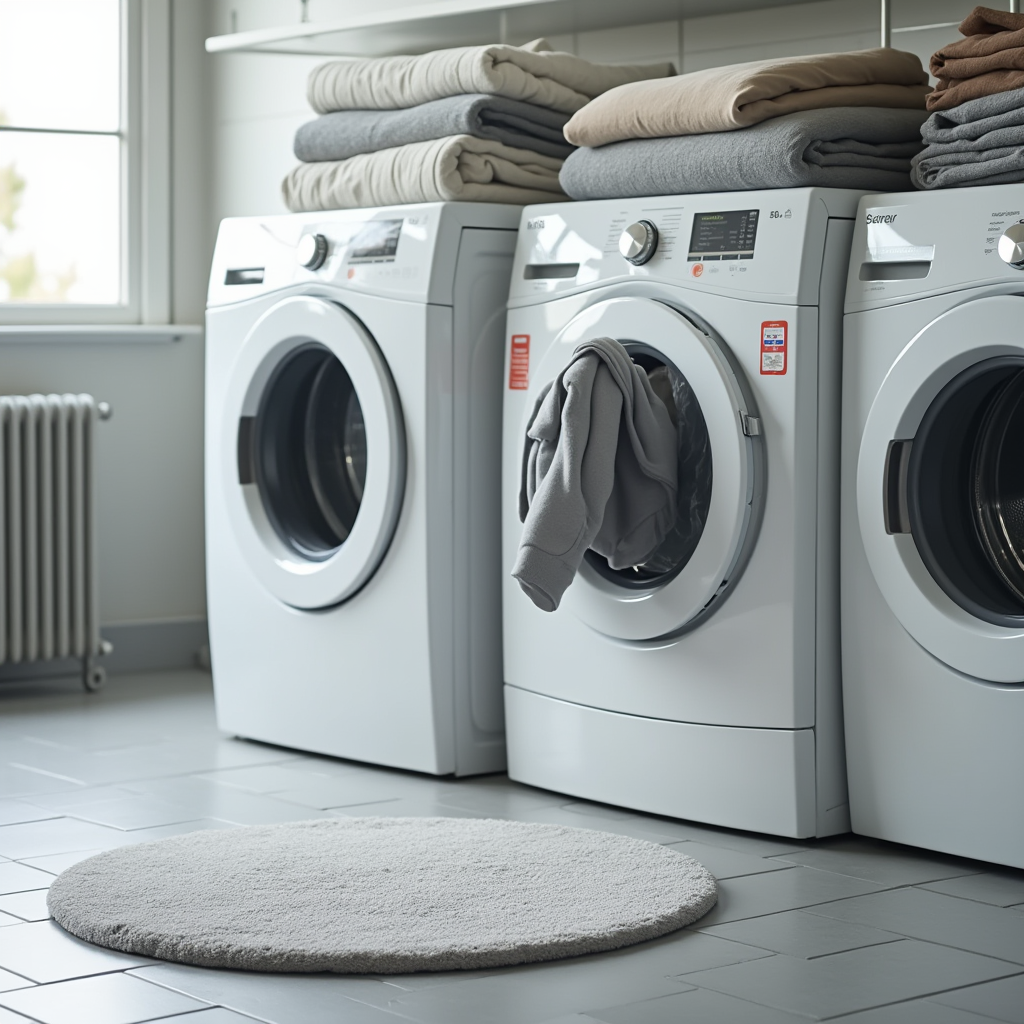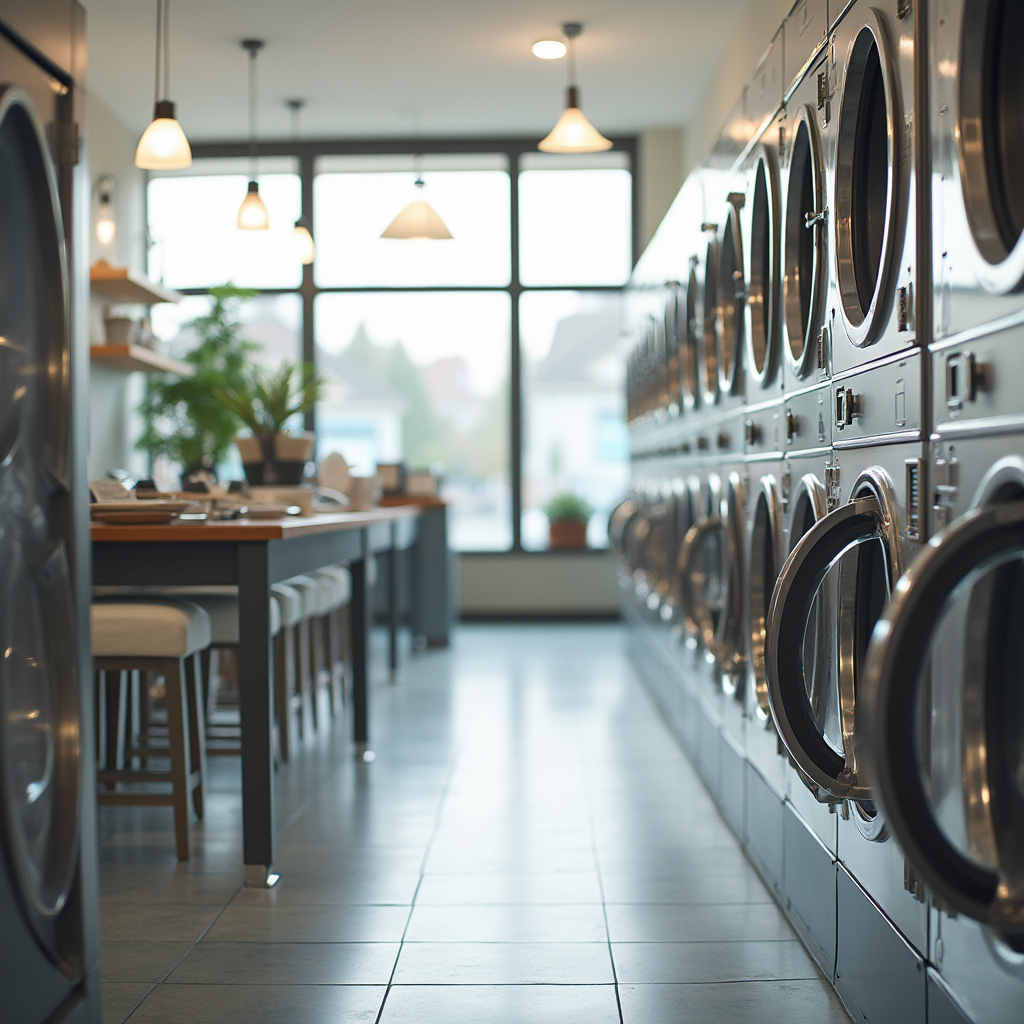Starting a laundromat is an appealing venture for many, with its potential for steady, passive income and relatively low operational costs. However, one critical question often arises at the outset: How many washing machines do I need to start a laundromat? Answering this question accurately can make the difference between a profitable venture and one that struggles to meet customer demand. In this article, we’ll explore how to determine the ideal number of washing machines based on factors such as customer traffic, machine size, and local market demand, so you can set your laundromat up for success right from the start.
Table of Contents
Understanding the Basics: How Many Machines Do You Really Need?
Standard Machine Count
A typical laundromat setup usually consists of 6 to 8 washing machines and an equal number of dryers. This configuration is suitable for small to medium-sized operations and can accommodate a variety of customer needs, including regular laundry and larger items like comforters. This range provides a balance between initial investment and customer service, allowing you to serve a reasonable number of clients without overwhelming your resources.
Balancing Customer Demand and Budget
To determine the right number of machines for your laundromat, you need to consider the local market demand and your budget constraints. For instance, if your target area has a high population density or a limited number of competing laundromats, you may want to consider a larger setup from the outset. Conversely, if you’re entering a less populated area with fewer potential customers, starting with fewer machines may be more prudent.
Machine Types and Sizes for a Laundromat Setup
Small, Medium, and Large Capacities
When selecting machines, it’s common to include a mix of capacities. A recommended configuration might involve:
- 3 to 4 machines with a capacity of 7 kg (ideal for regular laundry).
- 2 to 3 machines with a capacity of 10 kg (suitable for bulkier items).
- 1 machine with a larger capacity (e.g., 16 kg) for oversized loads like comforters or blankets.
This diverse setup ensures you cater to a wider range of customer needs, enhancing satisfaction and potentially increasing foot traffic.
Specialized Machines
In addition to standard washers, consider adding specialized machines like high-efficiency front loaders or machines with advanced features (like app payments or energy-saving modes). These machines can attract a tech-savvy clientele and set your laundromat apart from competitors.
Factors Influencing the Number of Washing Machines
Location and Market Demand
The success of your laundromat heavily relies on its location. If you’re situated in a densely populated urban area, you might require more machines—sometimes up to 50 or more—to meet the high demand. In contrast, a laundromat in a smaller town may only need 5 to 6 machines to effectively serve the local community.
Customer Flow Analysis
Analyzing customer flow can help you understand peak usage times and plan accordingly. For instance, if you find that your target demographic (students, families, etc.) tends to do laundry on weekends, you may need to ensure you have enough machines operational during those times to accommodate increased demand.
Planning Your Laundromat Space and Layout
Space Requirements per Machine
Physical space is a significant factor in determining how many machines you can install. Generally, you should allocate about 200 to 300 square feet for every 3 to 4 machines. This space includes room for customer access, waiting areas, and ensuring compliance with safety regulations.
Future Expansion
It’s advisable to plan for potential growth by allowing extra space for additional machines as your business expands and customer demand increases. Having a flexible layout can also allow you to pivot based on customer feedback and trends in laundry services.
Starting Small and Scaling Up: A Cost-Saving Strategy
Benefits of Starting with a Smaller Setup
Starting with a smaller setup can be a cost-effective strategy, allowing you to minimize initial investment and operational risks. This approach also provides an opportunity to gauge local demand before committing to a larger setup. As you build a loyal customer base, you can gradually add more machines based on proven demand.
Leasing and Financing Options
If financing is a concern, consider leasing equipment instead of purchasing it outright. This approach can significantly lower startup expenses and give you flexibility. Many equipment leasing companies offer financing options that allow you to spread payments over time, making it easier to manage cash flow as you establish your business.
Maintenance and Operating Costs per Machine
Monthly Costs per Machine
Understanding the monthly costs associated with each machine is crucial for maintaining profitability. Typical costs include:
- Water and electricity: Laundromats can see significant utility bills, with water usage often being the highest expense.
- Detergents and cleaning supplies: Regular stocking of laundry supplies will be necessary.
- Insurance and lease payments: These are ongoing costs that need to be factored into your budgeting.
Maintenance
Regular maintenance is critical to keeping machines in good working order and minimizing downtime. Budgeting about 5% to 10% of your revenue for maintenance costs can help ensure you have funds set aside for necessary repairs and upkeep.
Final Considerations for a Profitable Start
Matching Machines to Local Needs
Ultimately, the number of washing machines you need to start a laundromat should align with local demand. Conducting thorough market research to identify the demographics and laundry habits of your target customer base will help inform your decision on the optimal setup.
Setting a Plan for Upgrading or Adding Machines
As your business grows, be prepared to adjust your strategy. Regularly review your sales data and customer feedback to identify when it’s time to add machines or upgrade existing ones. Setting a budget for expansion can help ensure that you’re ready to respond to increased demand when it arises.
Conclusion
Determining how many washing machines you need to start a laundromat involves considering several factors, including location, customer demand, and your budget. By starting with a well-planned setup and remaining flexible to changes in the market, you can position your laundromat for success. Investing time in market research and maintaining a focus on customer service will help you create a thriving laundromat that meets the needs of your community.










